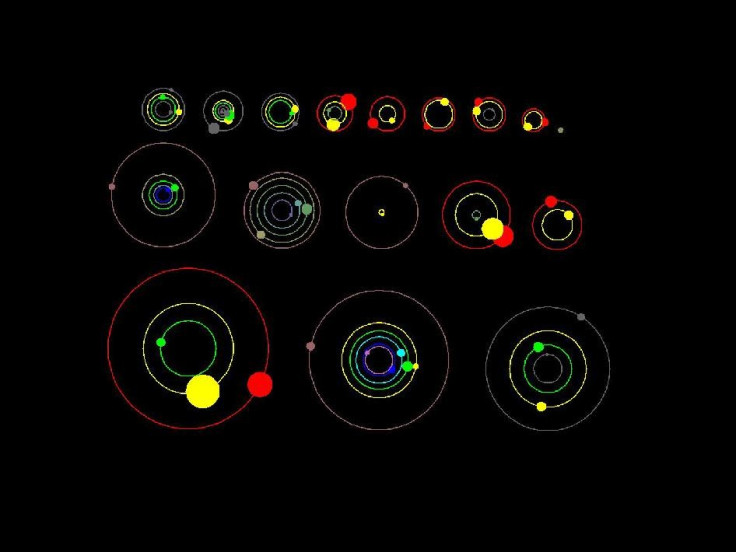Astronomers Discover 11 New Planetary Systems

Astronomers from the NASA have discovered 11 new solar systems, which host 26 planets.
The newly discovered planets orbit their stars once in every six to 143 days. The size of the planets ranges from 1.5 times the radius of the Earth to larger than Jupiter. Fifteen of them are sized between the Earth and Neptune.
Astronomers have discovered Kepler-25, Kepler-27, Kepler-30, Kepler-31 and Kepler-33 stars. Each of these Sun-like stars contains a pair of planets that orbit very close and are called inner planets.
Kepler-23, Kepler-24, Kepler-28 and Kepler-32 have both inner and outer planets, just like our solar system.
Kepler-33 hosts more planets than other stars and hosts five planets. It is older and more massive than the Sun.
According to astronomers, each of the new planetary systems contains two to five closely spaced transiting planets. In tightly packed planetary systems, the gravitational pull of the planets among themselves causes one planet to speed up and another planet to slow down along its orbit because of this orbital period of each planet keeps on changing.
Kepler detects this effect by measuring the changes; this method is called Transit Timing Variations (TTVs). They use this method to confirm these planets. Planetary systems with TTVs can be verified without ground-based observations.
"Prior to the Kepler mission, we knew of perhaps 500 exoplanets across the whole sky," said Doug Hudgins, Kepler program scientist at NASA. "Now, in just two years staring at a patch of sky not much bigger than your fist, Kepler has discovered more than 60 planets and more than 2,300 planet candidates. This tells us that our galaxy is positively loaded with planets of all sizes and orbits."
"Confirming that the small decrease in the star's brightness is due to a planet requires additional observations and time-consuming analysis," said Eric Ford, associate professor of astronomy at the University of Florida who is also part of Kepler mission. "We verified these planets using new techniques that dramatically accelerated their discovery."
"The approach that was used to verify the Kepler-33 planets shows that the overall reliability of Kepler's candidate multiple transiting systems are quite high," said Jack Lissauer, planetary scientist at NASA Ames Research Center at Moffett Field, California. "This is a validation by multiplicity."
© Copyright IBTimes 2025. All rights reserved.





















